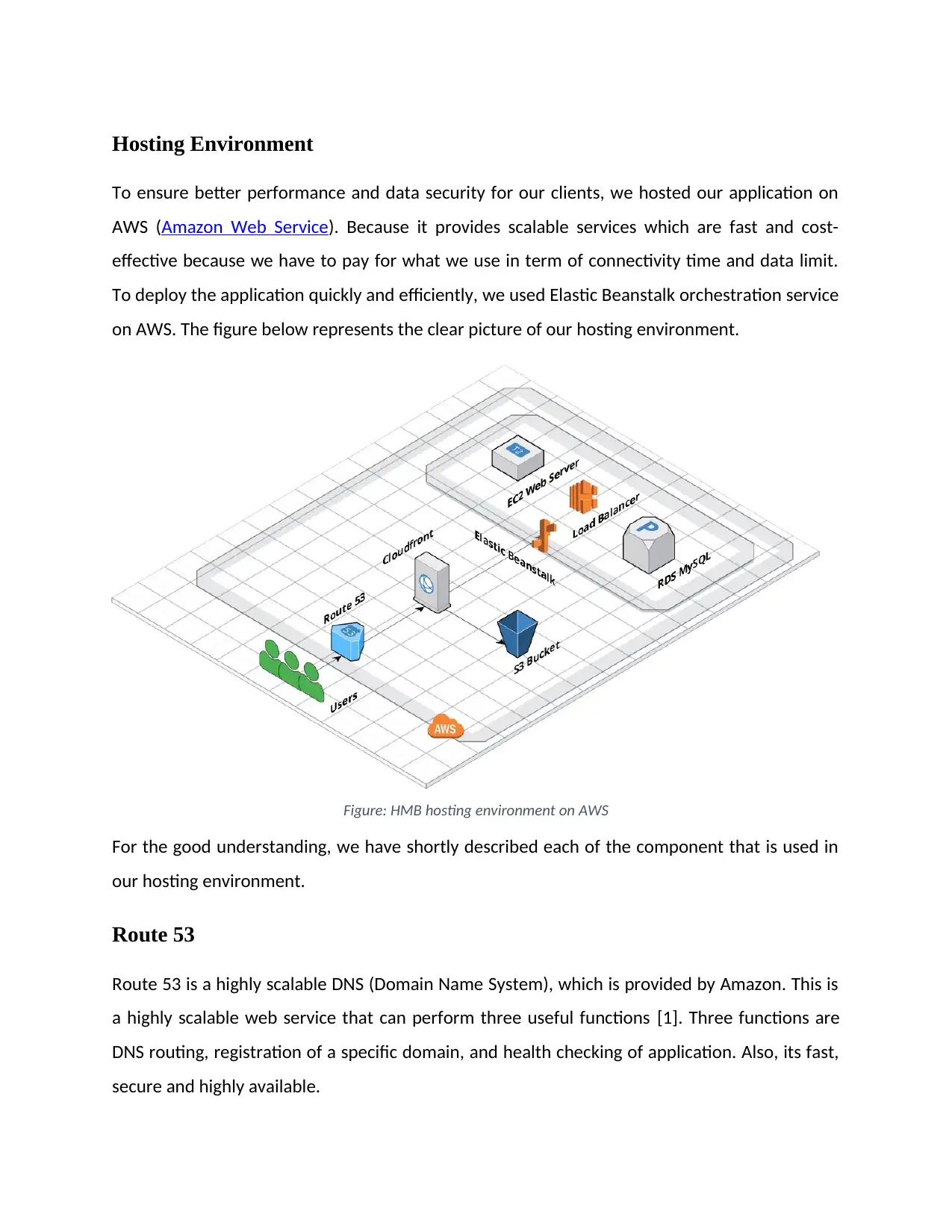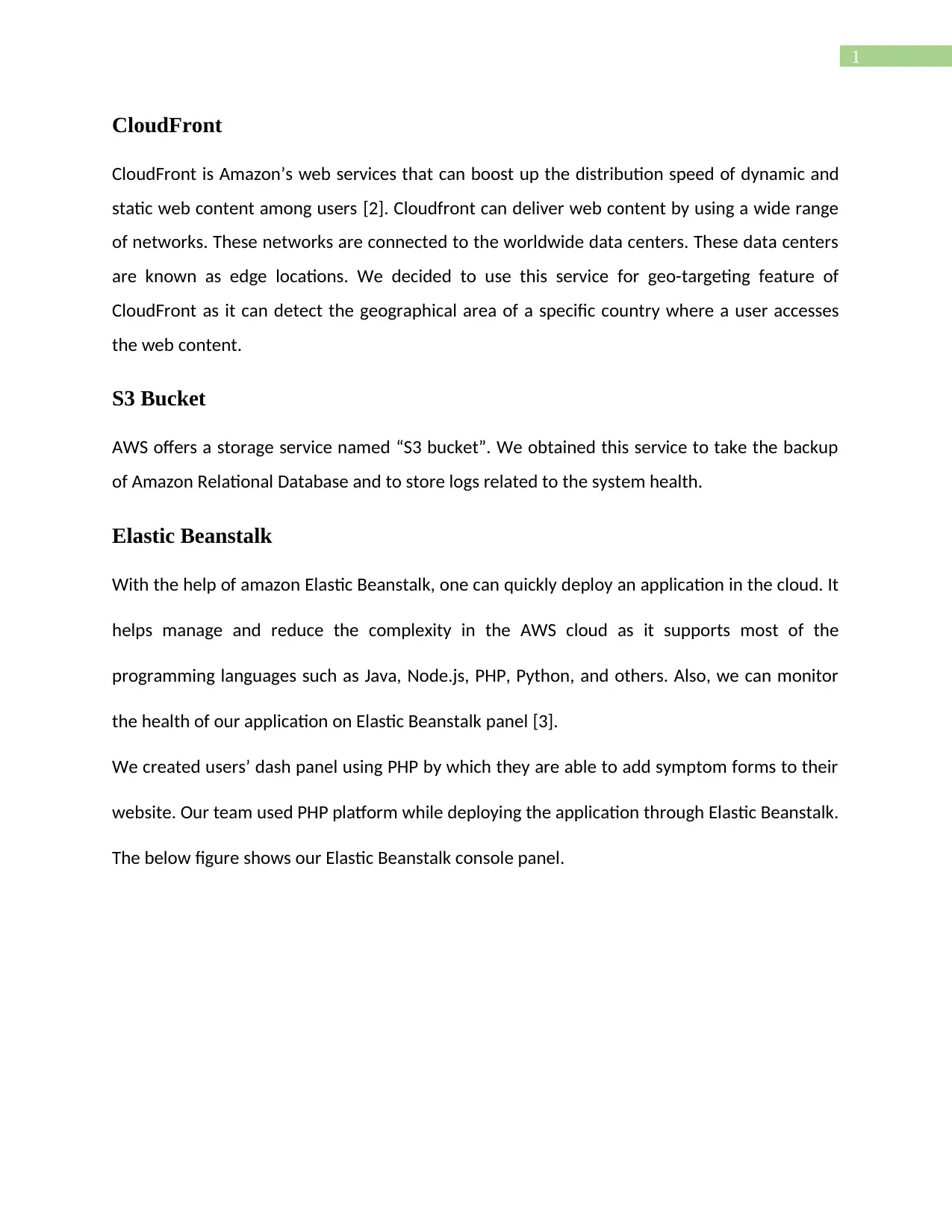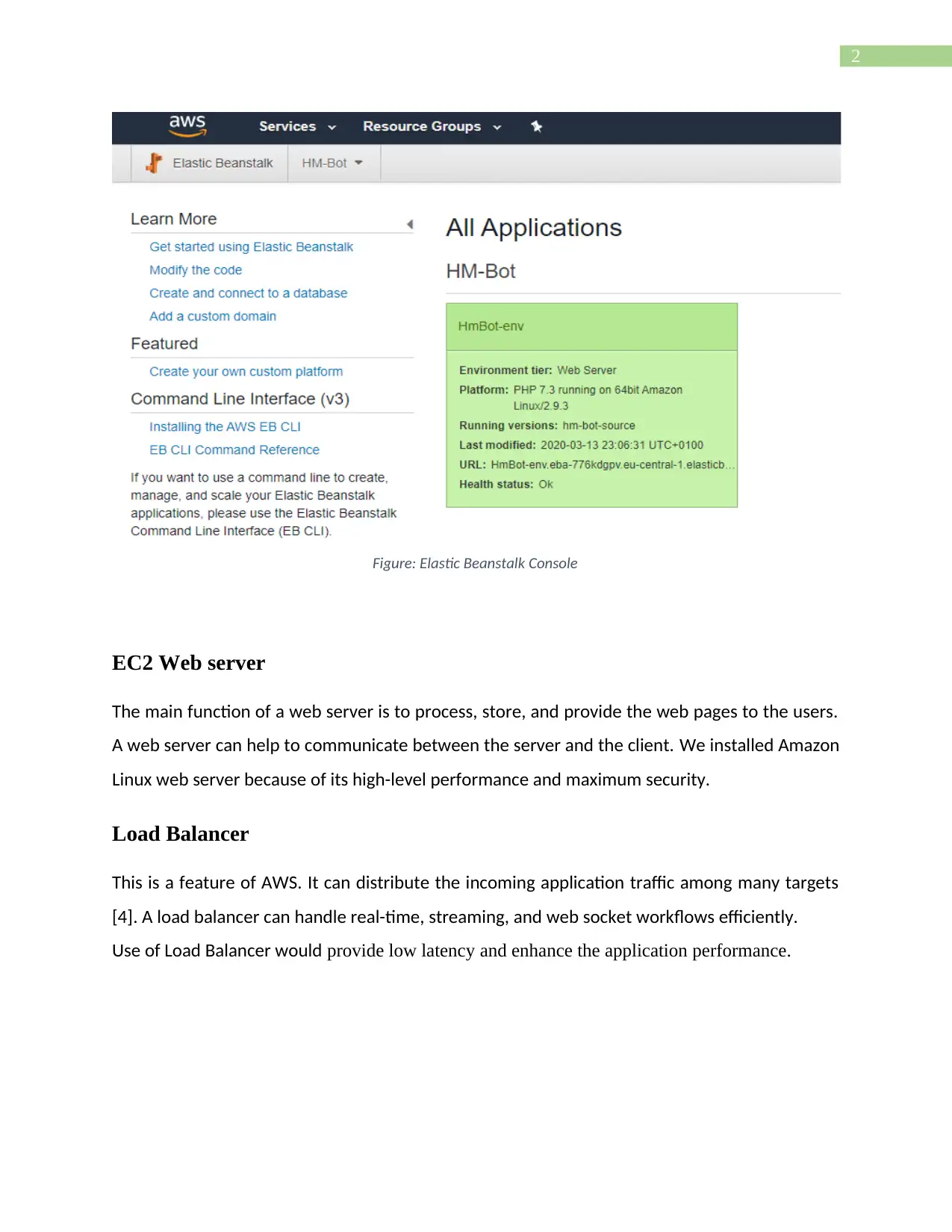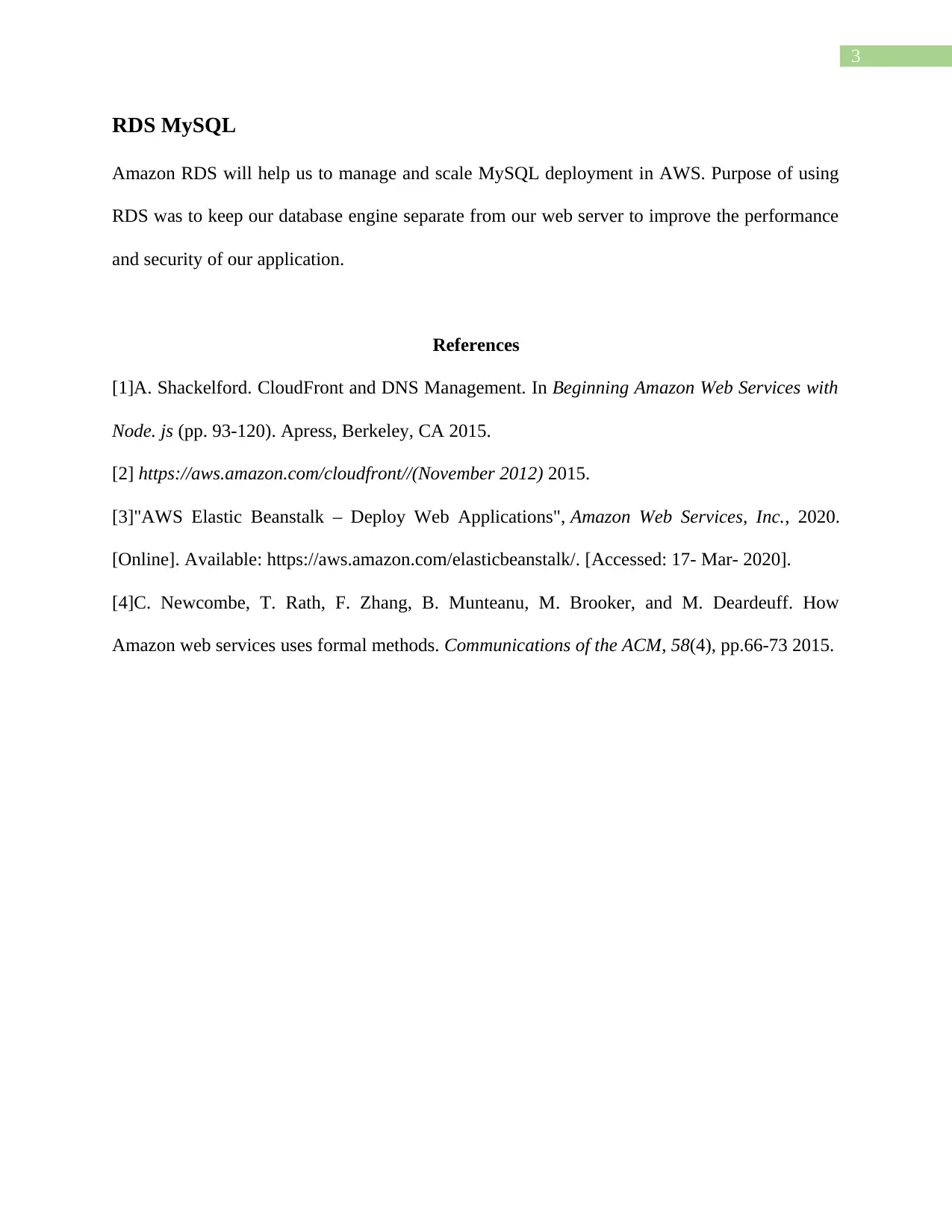Detailed Report: HMB Hosting Environment on AWS - Analysis
VerifiedAdded on 2022/08/23
|4
|696
|18
Report
AI Summary
This report provides a comprehensive overview of an AWS-based hosting environment designed for optimal performance and data security. The solution leverages various AWS services, including Route 53 for DNS management, CloudFront for content delivery, S3 for storage and backup, and Elastic Beanstalk for application deployment. The report details the use of EC2 web servers, load balancers for traffic distribution, and RDS MySQL for database management. It highlights the benefits of each component and how they collectively contribute to a scalable, efficient, and secure hosting infrastructure. The report also references supporting documentation and figures to illustrate the setup and functionality of the described environment. The application uses PHP and deploys it through Elastic Beanstalk. The report emphasizes the importance of RDS to separate the database engine from the web server for performance and security.
1 out of 4










![[object Object]](/_next/static/media/star-bottom.7253800d.svg)